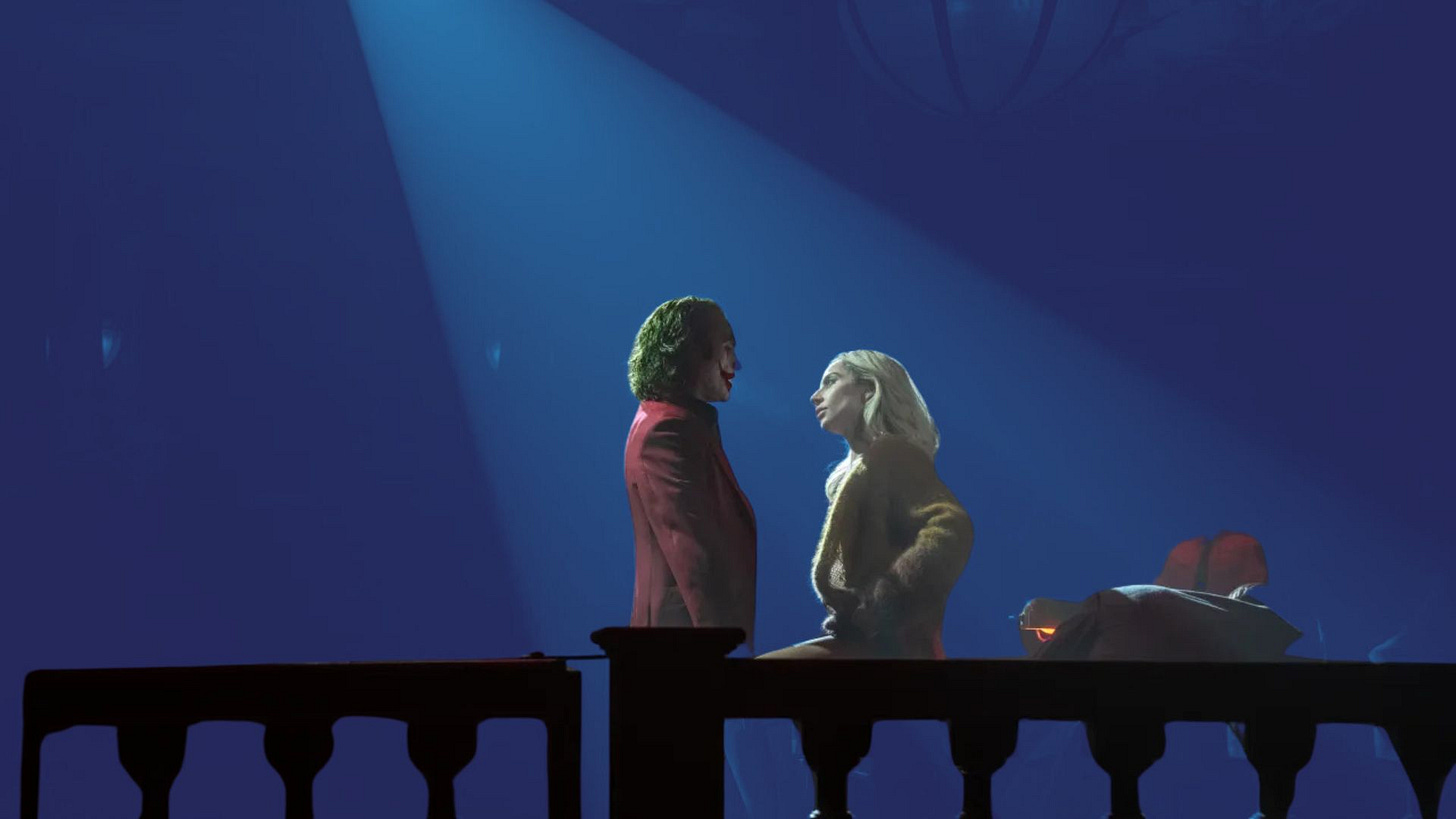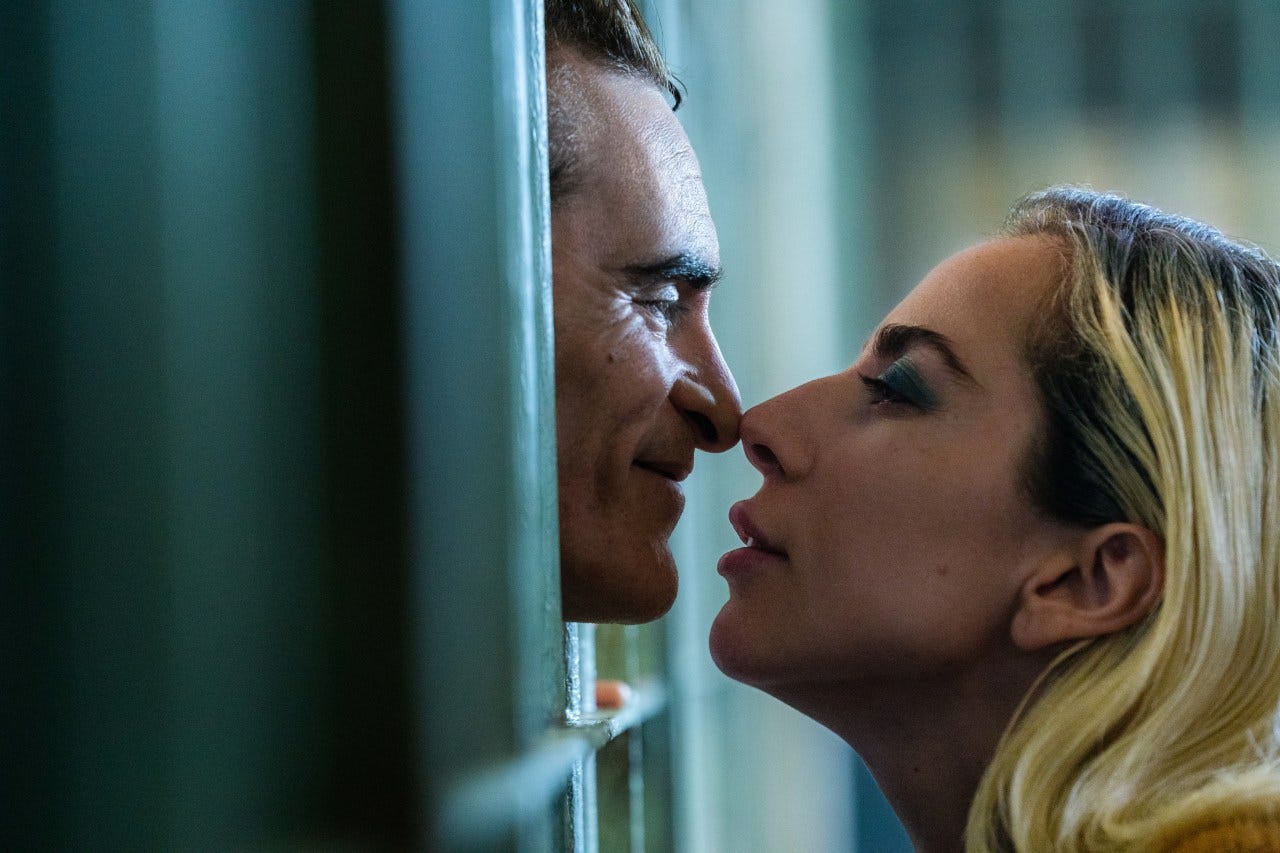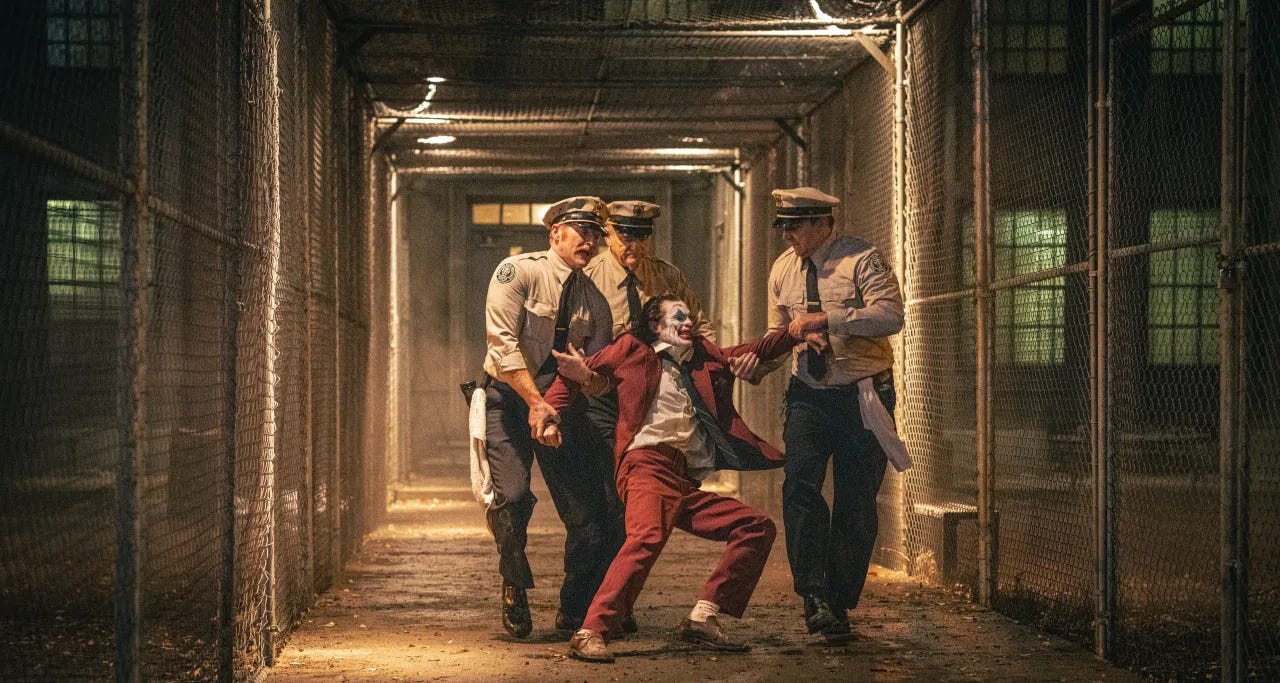Joker: Folie À Deux
A strange film, and even stranger sequel.
Love it or hate it, you won’t see many films like Joker: Folie À Deux. Todd Phillips’ sequel to 2019’s billion dollar hit Joker has no interest in “playing the hits” (though as a jukebox musical it quite literally plays the hits), opting instead to shift genres and emphasize the patheticness of its titular character. It’s a deeply flawed film, but one that nevertheless intrigued me with its music and themes.
Joker: Folie À Deux finds Arthur Fleck institutionalized at Arkham awaiting trial for his crimes as Joker. While struggling with his dual identity, Arthur not only stumbles upon true love, but also finds the music that's always been inside him.
2019’s Joker was elevated by Joaquin Phoenix’s superb performance, and Folie À Deux is no different. Phoenix brings incredible nuance to the role even during his exaggerated moments. We as a viewer are never quite sure whether we’re seeing the “real” Arthur or if its all just a mask. Is his sadness a facade hiding his underlying mania? Is his crazed laughter a coping mechanism for his depression and discomfort? Phoenix plays the role differently at any given moment, making for a disturbing, but impressive characterization.
Folie À Deux also introduces Lady Gaga in a phenomenal turn as Harleen “Lee” Quinzel. Lee meets Arthur at Arkham Asylum and the two quickly fall in love, bonding over their similar pasts and warped sense of humor. Gaga’s role is more supporting than co-lead, but she is an excellent foil to Phoenix. Whereas Arthur never quite seems to know who he is, Gaga portrays Lee with a dark self-assurance. She commands and controls every scene she’s in, and exerts that control over Arthur, the media, and anyone else she encounters.
The film’s technical prowess remains as impressive as the first. It may not reinvent the cinematic wheel, but it’s well shot, beautifully lit and colored, and the sound design and score is a real standout. I was admittedly underwhelmed by Hildur Guðnadóttir‘s Oscar winning score for 2019’s Joker, but here it’s masterfully integrated into the musical numbers, making for some unique song arrangements. Listen and you’ll notice the score’s instrumentation being used during song covers, which allows the songs to seamlessly bleed in and out of the film’s sonic landscape.
Speaking of songs, I have mixed feelings on the film’s musical components. I admired the structural use of music. The musical numbers are introduced after Arthur meets and falls in love with Harleen Quinzel. As a result, the singing feels natural - it acts as his fantasy world now that he’s “in love.” That said, I wish there was more purpose to the music’s execution. At its best moments, the singing would occur in-scene, with memorable numbers taking place at Arkham Asylum, the courthouse, and on a staircase at the film’s end. But just as often the music takes place on an imagined stage, and I found these numbers to be superfluous and unsuccessful in communicating anything new to the audience.
Which leads me to the film’s other major flaw: the pacing. Between all the standalone musical numbers and the film’s thematic overload (more on that later), the runtime feels long and the pacing feels sluggish. Even during my viewing I was noticing scenes or musical numbers that could be cut with little-to-no impact, which is the last thing a first-time viewer should be noticing.
As an aside, Folie À Deux is also a cruel film, much like the first. That’s not a flaw (it’s a personal dislike), but it made for a tough viewing experience, and might make certain viewers uncomfortable. The violence is fairly mild, especially for an R-rated film, but the uncomfortable pit in my stomach didn’t leave throughout the film’s 138 minute runtime.
As you can likely tell by now, Joker: Folie à Deux takes big swings in an attempt to be different from Joker. But despite this sequel’s attempted distance from its predecessor, in a strange way the film clarifies and improves upon the somewhat scatterbrained thesis of the first film. Sure, “we live in a society” has become more of a meme than a message at this point, but Folie à Deux attempts to interrogate what kind of a society would continuously enable an evil like this. And much like real life, there’s no single answer.
You could blame Arthur’s lawyer and psychiatrist, who try to pin mental illnesses on him for their own gain. You could blame Arthur’s fans, who admire his misdeeds and perpetuate his violence. You could blame the prison system, which mistreats and abuses Arthur. You could blame the legal system, which seeks to punish Arthur at any and all costs. You could blame the media, which makes a circus out of Arthur’s imprisonment and trial.
This many threads of blame can make for a frustrating viewing experience (in that the film still doesn’t pinpoint a singular cause or message), but that’s also the point. Folie à Deux at least has a stance, something the first film often seemed to lack, or at least poorly communicated. What is the reason an evil like the Joker thrives in this film’s society? All of the above.
All of that to say, this is a strange film. I completely understand the polarizing reactions to the film, because I have pretty polarized thoughts on it myself. It’s a film that seems brilliant in one moment and tiresome in the next. I can honestly see my thoughts souring or improving in future viewings. I’ve seen much better in 2024, but I’ve also seen far, far worse. But at the very least, I prefer Folie à Deux to the original film, find its themes to be worth further thought, and admire its attempts to go beyond what the first Joker was.
★★★☆☆




